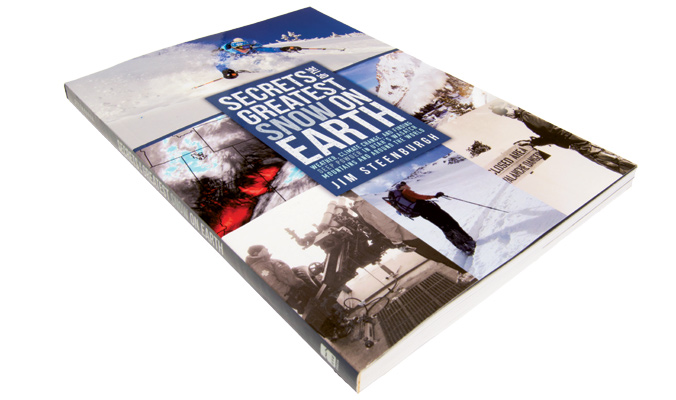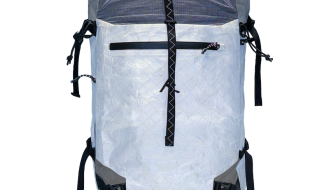For the past 20 years, Jim Steenburgh has had two things on his mind—meteorology and ski touring. After receiving his PhD from the University of Washington in 1995, Steenburgh took his interest in mountain weather and climate to the University of Utah’s Atmospheric Sciences Department—where he is now a professor—and into the Wasatch Mountains. “Having weather eyes can be pretty useful in the backcountry,” Steenburgh says. “And I see so much stuff when I’m out ski touring that I don’t understand. It helps plant seeds for future research projects.” Through his new book, Secrets of the Greatest Snow on Earth and his popular blog, Wasatch Weather Weenies, Steenburgh explains complex regional weather and climate patterns in terms that skiers (without meteorology degrees) can apply to their own tours. Here’s an extended version of Steenburgh’s interview in the December issue.
Backcountry: How long have you been backcountry skiing?
Jim Steenburgh: Probably a little over 20 years now. I started doing some touring on the volcanoes in the Cascades when I was going to the University of Washington.
BCM: How does being a meteorologist inform your knowledge as a backcountry skier?
JS: The weather in the Wasatch is very localized. You can have a really large accumulation in upper Little Cottonwood with hardly anything falling 10 or 15 kilometers away. Or sometimes the east side of the Wasatch actually gets more [snow] than the west—that’s not typical, but it does happen. Knowing how to predict, to some degree, when that happens is useful.
BCM: And vice-versa—how does being a backcountry skier influence your life as a meteorologist?
JS: I see so much stuff when I’m out ski touring that I don’t understand, and it helps plant seeds for future research projects. When it comes to the small-scale structure of these storms and what’s happening on one ridge versus another, it really helps me as a research meteorologist to be out skiing a lot.
BCM: What, in your opinion, is the formula for perfect powder?
JS: I talk about this in the book—the Goldilocks Storm. For me the Goldilocks Storm is 12 to 18 inches of snow on a really nice, soft, settled base, and for it to be stacked right, it starts out with higher water content and gets drier over time. That’s what makes great powder skiing. That’s what gives you really good flotation and gives you hero snow.
BCM: What’s the lake effect, and what does that mean for the Wasatch?
JS: The lake effect is basically storms that form because of cold air flowing over the Great Salt Lake. And in Utah, the lake effect is overblown a little bit. A lot of people think it creates a lot of the snow out here. But most of the time it just adds a little more low-density snow at the end of the storm. It’s kind of the icing on the cake.
BCM: What are some major factors contributing to the high instances of avalanches and avalanche accidents in the Wasatch, and Utah at large?
JS: One of the unique things here in Utah is over half of our skier-related fatalities from avalanches are people who rode lifts before they went out of bounds. Almost all of those cases at the Canyons, Brighton and Snowbasin—and those resorts work really hard at educating people—[are where] you can see the backcountry. It’s this tremendous magnet on a big powder day. Especially when you’re riding the lift and you’re inbounds and the conditions seem pretty safe, and then you see maybe a couple people taking a chance and going into the backcountry. It’s hard to say no. [In Secrets of the Greatest Snow on Earth] I really talk a lot about the mental aspects of a situation like that and some of the traps that people fall into.
BCM: What are some of those traps?
JS: It’s powder fever; we’re not Vulcans. If we could look at the backcountry in a very objective way, without letting our emotions cloud our decision making, it would make for safer travel. But the problem is if you have good powder there, it’s hard to say no. Everyone has different experience levels, [but] even people who have a lot of experience can make decision-making mistakes.
One of the things that I think is hard for people who are leaving a ski area and going out of bounds (and may not have a lot of backcountry travel experience), is recognizing that a small change in aspect or slope angle can be the difference between a safe run and triggering an avalanche.
BCM: How do you make a weather forecast? What steps are involved?
JS: There are six questions you need to answer. What has happened and why has it happened? What is happening and why is it happening? And what will happen and why will it happen? In the first few hours of a forecast, often there’s a human component—“I think this is how the front’s going to move.” After that, it’s a lot of computer modeling and interpretation if we want to forecast what it will be like tomorrow morning. But the computer models don’t fully account for the effects of the mountains. Where experience comes in is looking at computer models and adding what the mountains are going to do to what the computer models are telling you.
BCM: Any predictions for this winter in Utah?
JS: We can’t really predict what’s going to happen in northern Utah because our weather doesn’t correlate with El Niño or La Niña. In a big El Niño year, for example, you might expect a place like Taos [New Mexico] to have a really good year. But northern Utah doesn’t correlate very well for us. It’s kind of a crapshoot. So your guess is as good as mine. If you want to tell me we’re going to have a good snow year, I’m fine with that.











Related posts: